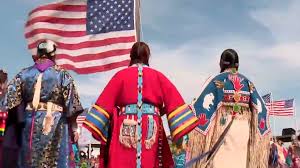
Breaking News
 Victoria's Secret Fashion Show 2025: Brand back to 'super sexy'...
Victoria's Secret Fashion Show 2025: Brand back to 'super sexy'...
 Scientists reveal what really happens after someone has a near-death experience
Scientists reveal what really happens after someone has a near-death experience
 Florida's housing market is flashing a warning for the rest of the US
Florida's housing market is flashing a warning for the rest of the US
 WATCH LIVE: President Trump and FBI Director Kash Patel to Hold Press Conference - 3 PM ET
WATCH LIVE: President Trump and FBI Director Kash Patel to Hold Press Conference - 3 PM ET
Top Tech News
 3D Printed Aluminum Alloy Sets Strength Record on Path to Lighter Aircraft Systems
3D Printed Aluminum Alloy Sets Strength Record on Path to Lighter Aircraft Systems
 Big Brother just got an upgrade.
Big Brother just got an upgrade.
SEMI-NEWS/SEMI-SATIRE: October 12, 2025 Edition
 Stem Cell Breakthrough for People with Parkinson's
Stem Cell Breakthrough for People with Parkinson's
 Linux Will Work For You. Time to Dump Windows 10. And Don't Bother with Windows 11
Linux Will Work For You. Time to Dump Windows 10. And Don't Bother with Windows 11
 XAI Using $18 Billion to Get 300,000 More Nvidia B200 Chips
XAI Using $18 Billion to Get 300,000 More Nvidia B200 Chips
 Immortal Monkeys? Not Quite, But Scientists Just Reversed Aging With 'Super' Stem Cells
Immortal Monkeys? Not Quite, But Scientists Just Reversed Aging With 'Super' Stem Cells
 ICE To Buy Tool That Tracks Locations Of Hundreds Of Millions Of Phones Every Day
ICE To Buy Tool That Tracks Locations Of Hundreds Of Millions Of Phones Every Day
 Yixiang 16kWh Battery For $1,920!? New Design!
Yixiang 16kWh Battery For $1,920!? New Design!
 Find a COMPATIBLE Linux Computer for $200+: Roadmap to Linux. Part 1
Find a COMPATIBLE Linux Computer for $200+: Roadmap to Linux. Part 1
Are Any Peoples Truly Indigenous?

This raises the question of what it means to be "indigenous"—a status generally premised on the we-were-here-first claim—which implies a right of ownership. That implied right to ownership, in turn, is premised on a presumption that the alleged indigenous group homesteaded the land in question—by virtue of being the first to occupy it. Or, put in more colloquial terms, ownership is premised on the moral theory known as "finders keepers."
But, there are some problems and ambiguities with the we-were-here-first claim as it is usually made. Indeed, the problems are found in the phrase itself and in the lack of specifics that is usually presented in the argument. That is, when we encounter the phrase "we were here first" we have to be very specific about at least three of the terms contained in the phrase. For example, what is the precise meaning of "we" and of "here" and of "first"?
Once we look at this problem in detail, we find that no group is ever truly indigenous. On the other hand, if we prefer peace to utter lawlessness and war, it becomes necessary to recognize that just because a population in a certain place is not indigenous, and had displaced some other population in the past, this does not mean the land in question is simply up for grabs.
Who Is Indigenous?
In engaging the problem of indigeneity, we might turn to a helpful fictionalized account of a conversation between Chief Sitting Bull and Colonel Nelson Miles in the 2007 film Bury My Heart at Wounded Knee. This scene from the film is often posted by users in social media whenever the claim of tribal indigeneity makes the rounds in media. The conversation surely did not happen this way—if it happened at all—but the dialogue itself helps illustrate how difficulties arise when a group of people claims to be indigenous.



